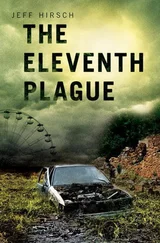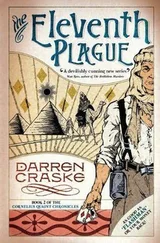Anthony Summers - The Eleventh Day
Здесь есть возможность читать онлайн «Anthony Summers - The Eleventh Day» весь текст электронной книги совершенно бесплатно (целиком полную версию без сокращений). В некоторых случаях можно слушать аудио, скачать через торрент в формате fb2 и присутствует краткое содержание. Жанр: Старинная литература, на английском языке. Описание произведения, (предисловие) а так же отзывы посетителей доступны на портале библиотеки ЛибКат.
- Название:The Eleventh Day
- Автор:
- Жанр:
- Год:неизвестен
- ISBN:нет данных
- Рейтинг книги:3 / 5. Голосов: 1
-
Избранное:Добавить в избранное
- Отзывы:
-
Ваша оценка:
- 60
- 1
- 2
- 3
- 4
- 5
The Eleventh Day: краткое содержание, описание и аннотация
Предлагаем к чтению аннотацию, описание, краткое содержание или предисловие (зависит от того, что написал сам автор книги «The Eleventh Day»). Если вы не нашли необходимую информацию о книге — напишите в комментариях, мы постараемся отыскать её.
The Eleventh Day — читать онлайн бесплатно полную книгу (весь текст) целиком
Ниже представлен текст книги, разбитый по страницам. Система сохранения места последней прочитанной страницы, позволяет с удобством читать онлайн бесплатно книгу «The Eleventh Day», без необходимости каждый раз заново искать на чём Вы остановились. Поставьте закладку, и сможете в любой момент перейти на страницу, на которой закончили чтение.
Интервал:
Закладка:
At the meeting, which Atef also attended, KSM came up with a raft of ideas for terrorist attacks, most of them involving airliners. Atef, too, had recently been discussing the idea of attacking aircraft. Terrorist attacks on planes had usually followed a pattern—hijack a plane, have it land in a compliant nation-state, then make demands (often for the release of captured comrades). By the mid-1990s, however, bin Laden operatives had little prospect of finding a “friendly” place to land. For the men meeting at Tora Bora, the focus was simply on destroying planes.
Atef apparently favored finding ways to blow up airliners in mid-air, as in the 1988 downing of Pan Am 103 over Scotland. He and bin Laden listened, however, as KSM proposed a very different concept—using hijacked planes as weapons.
There are two versions of what he suggested. According to KSM himself, the notion he proposed was ambitious in the extreme. Ten planes would be hijacked, on the same day, to be crashed into target buildings on both coasts of the United States. He himself, as commander, would force a landing at an airport, kill all male passengers, then deliver a speech assailing American support for Israel and “repressive” regimes around the world. This, as the 9/11 Commission put it, would have been “theater, a spectacle of destruction with KSM as the self-cast star—the super-terrorist.”
According to another detainee, KSM’s proposal was more modest, a suggestion that the World Trade Center should be targeted again—this time not with a bomb but by small planes packed with explosives. This, the detainee said, prompted bin Laden to suggest a grander vision. “Why do you use an ax,” he supposedly mused, “when you can use a bulldozer?”
KSM thought it was important to target civilian landmarks. Were only military or government buildings hit, he surmised, ordinary Americans “would not focus on the atrocities that America is committing by supporting Israel against the Palestinian people.” The purpose of a further strike on the World Trade Center was to “wake people up.”
KSM’s proposal may have been premature. He got the impression that bin Laden’s priority concern remained the situation in Saudi Arabia. He told KSM he was “not convinced” of the practicality of the planes operation. For now, the discussion went no further.
Nevertheless, a further strike on the World Trade Center apparently remained on the drawing board. Months after the meeting at Tora Bora, a bin Laden operative in Europe traveled to America and shot videotape of various prominent buildings—including the Twin Towers. The footage, seized after 9/11, included shot after shot of the towers, taken from multiple angles.
There were five tapes, with pictures not only of the Trade Center but of the Statue of Liberty, the Brooklyn Bridge, San Francisco’s Golden Gate Bridge, Chicago’s Sears Tower, and Disneyland.
At his meeting with bin Laden, KSM had suggested sending operatives “to study in the U.S. flight institutes.” Whether or not bin Laden ordered it, it seems that someone in the terrorist milieu was already making such preparations. The FBI had received information that “individuals with terrorist connections had requested and received training in the technical aspects of aviation.”
One such individual was a young Saudi who, after a trip to Arizona to learn English, returned home seeming a “different person.” He grew a full beard, shunned established friends, and spent most of his spare time reading books on religion and aviation. Then, in 1996, he returned to the Grand Canyon State—to learn to fly. The twenty-four-year-old seemed unsure of himself in the cockpit, even frightened, but he was to return again and again to flight school, even after he got his commercial pilot’s license. The Saudi was Hani Hanjour, who in 2001 would fly a hijacked Boeing 757 into the Pentagon.
Mohamed Atta, who was to lead the 9/11 operation, turned twenty-seven the year of the Tora Bora meeting. In Germany, where he was now studying, he struck people—even those familiar with Muslim practices—as religiously obsessed.
IN AFGHANISTAN in 1996 bin Laden had asked the British reporter Robert Fisk to come to see him for a second time—less than three years after their first meeting in Sudan. The Saudi was nearing forty now and visibly aging. His beard was longer and starting to turn gray, the lines around his eyes deeper.
It was night when bin Laden met with the reporter. He talked on and on of how Saudi Arabia had become “an American colony,” of how the “evils” of the Middle East were rooted in the policies of the United States. “Resistance against America will spread in many, many places in Muslim countries,” he said. “We must drive out the Americans.”
In the flickering light of a paraffin lamp, when his interviewee agreed to be photographed, Fisk saw in bin Laden’s face the trace of a smile and what looked like vanity. He thought the man “possessed of that quality which leads men to war: total self-conviction. In the years to come I would see others manifest this dangerous characteristic … but never the fatal self-resolve of Osama bin Laden.”
PART V
PERPETRATORS
TWENTY-THREE
SEVEN THOUSAND MILES AND TWO CONTINENTS AWAY, VERY FEW people had yet sensed the real danger in the man.
According to the then-head of the CIA’s Counterterrorist Center, Winston Wiley, in a recently released 9/11 Commission interview, President Clinton’s administration actually reduced the focus on counterterrorism. Former Clinton officials, and the President himself, have insisted otherwise. One can only report claim and counterclaim, and cite the record.
Two months into the Clinton presidency, in 1993, bin Laden had been characterized in a CIA document as merely an “independent actor who sometimes works with other individuals or governments … to promote militant Islamic causes throughout the region.” What the Agency told the White House ranged from dismissing bin Laden as “a flake” or—closer to reality—as a “terrorist financier,” and the “Ford Foundation” of Sunni Muslim extremism.
In 1995, when the evidence had yet to link bin Laden firmly to any specific attack, a formal Clinton order—aimed at cutting off funding from named terrorist organizations—did not mention him.
In 1995 and 1996, however, the President made nine speeches mentioning terrorism or calling for tough action. He also issued a Presidential Decision Directive—PDD-39—designed to combat terrorism that targeted the United States. It included, for the first time, a provision for what was to become known as rendition, the forcible removal to the United States of captured terrorist suspects. Policy on the subject was henceforth to be coordinated from the White House.
Anthony Lake, Clinton’s first national security adviser, and Richard Clarke—who eventually became national coordinator for counterterrorism—had been badgering the CIA for fuller information on bin Laden. One CIA official recalled having thought that Lake was positively “foaming at the mouth” about him. “It just seemed unlikely to us,” Clarke recalled, “that this man who had his hand in so many seemingly unconnected organizations was just a donor, a philanthropist of terror.”
CIA Director James Woolsey, who ran the agency until 1995, conceded after 9/11 that there was a period in the 1990s when U.S. intelligence was simply “asleep at the wheel.” After the Clinton directive, which called for improving the agencies’ performance, the CIA and the FBI responded.
In early 1996, with Lake’s approval, a small group of CIA officers and analysts were formed into a unit that focused solely on bin Laden. Only a dozen strong at first, its number would in time grow to forty or fifty people—most of them women—supplemented by a small number of FBI employees. The Bureau staffers were there in the name of liaison, but the relationship was less than happy. The CIA attitude toward the FBI contingent was so hostile, one arriving Bureau supervisor thought, that he felt as though he had “walked into a buzz saw.”
Читать дальшеИнтервал:
Закладка:
Похожие книги на «The Eleventh Day»
Представляем Вашему вниманию похожие книги на «The Eleventh Day» списком для выбора. Мы отобрали схожую по названию и смыслу литературу в надежде предоставить читателям больше вариантов отыскать новые, интересные, ещё непрочитанные произведения.
Обсуждение, отзывы о книге «The Eleventh Day» и просто собственные мнения читателей. Оставьте ваши комментарии, напишите, что Вы думаете о произведении, его смысле или главных героях. Укажите что конкретно понравилось, а что нет, и почему Вы так считаете.











